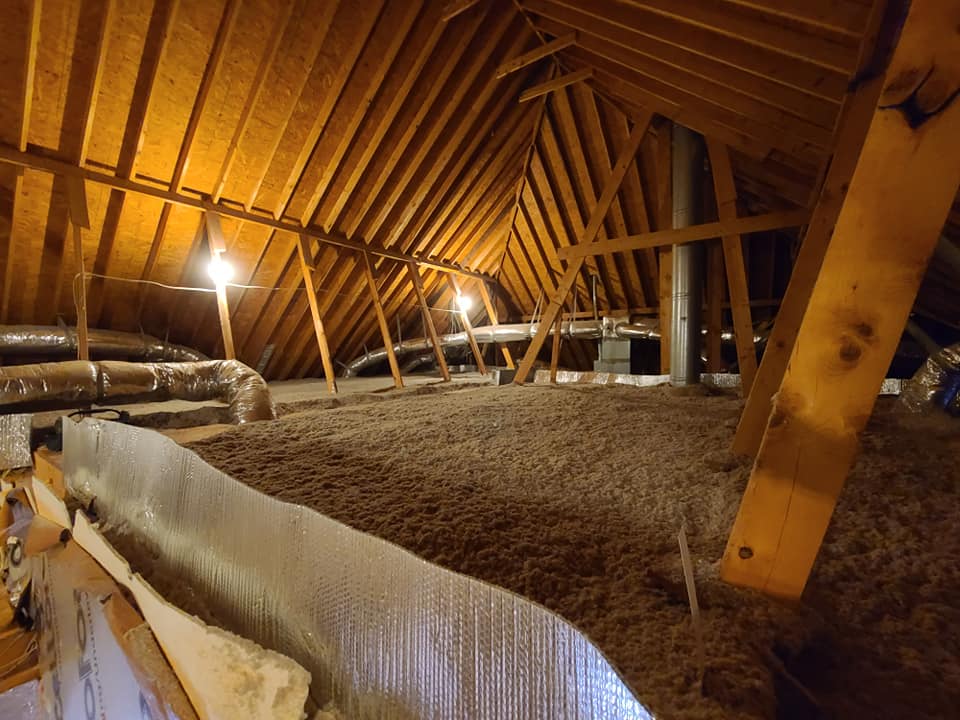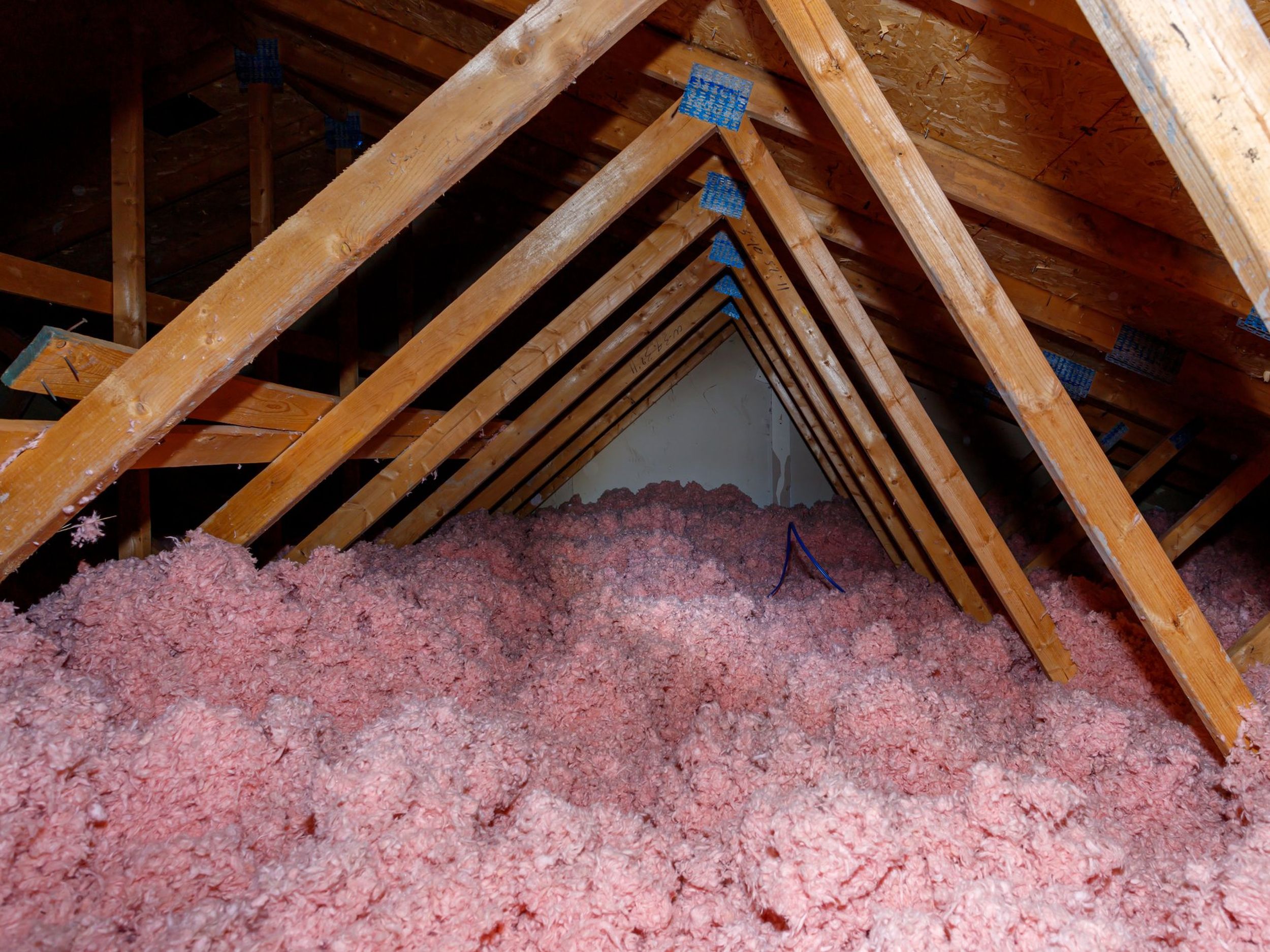Why Attic Insulation DFW is Essential for Energy Performance in Dallas-Fort Worth
Wiki Article
Discover the Various Kinds of Attic Insulation and Their Special Advantages for Your Home's Energy Efficiency

Fiberglass Insulation
Fiberglass insulation is one of the most generally utilized materials for attic insulation as a result of its outstanding thermal efficiency and cost-effectiveness. Made up of tiny glass fibers, this material effectively traps air, producing a shielding barrier that helps preserve regular indoor temperatures. Its high R-value per inch makes it specifically efficient at standing up to heat transfer, which is critical for energy preservation in homes.
Installment of fiberglass insulation is fairly straightforward, often offered in batts or loose-fill kinds, fitting numerous attic setups. Additionally, it is non-combustible and resistant to moisture, lowering the risk of mold and mildew growth. This sturdiness adds to its longevity, making fiberglass a sensible long-term financial investment for property owners.
Additionally, fiberglass insulation is usually manufactured from recycled products, which boosts its eco-friendliness. The product can additionally add to soundproofing, minimizing sound transfer between areas. While it is crucial to wear safety gear during installation to prevent irritability from the fibers, the total benefits of fiberglass insulation, consisting of power savings and ecological considerations, make it a popular choice for enhancing attic room efficiency and promoting a comfortable living setting.
Spray Foam Insulation
Spray foam insulation is a very efficient option for attic room insulation, recognized for its exceptional air sealing and thermal efficiency. This ingenious insulation material is made up of a combination of isocyanate and polyol material, which, when combined, increases quickly to fill gaps and dental caries in the attic room space. Its capacity to follow various surface areas makes certain a constant barrier versus air leaks, considerably reducing heat loss throughout colder months and warmth gain throughout warmer seasons.One of the essential advantages of spray foam insulation is its high R-value per inch, which indicates it offers exceptional thermal resistance in a fairly slim application. This is specifically helpful in attics where area is commonly minimal. Furthermore, spray foam can assist reduce moisture build-up, lowering the danger of mold and mildew and mildew development, which can be detrimental to both the framework and indoor air high quality.
While the first expense of spray foam insulation might be more than conventional alternatives, its long-term power financial savings, coupled with increased convenience and enhanced home worth, make it a beneficial financial investment for property owners looking for enhanced energy effectiveness. Attic Insulation DFW. Overall, spray foam insulation stands apart as a reliable solution for enhancing attic room insulation
Cellulose Insulation

Cellulose insulation is a popular choice for attic room insulation, mostly made up of recycled paper visit items treated with fire retardants. This eco-friendly option is recognized for its outstanding thermal efficiency, successfully decreasing heat transfer in both summer season and winter season. The thick composition of cellulose permits it to fill up spaces and voids in attic rooms, offering a seamless obstacle against air leakages.
One of the significant advantages of cellulose insulation is its ability to stand up to mold and bugs, owing to the fire retardant treatments made use of during production. Additionally, it boasts a high R-value per inch, which converts into premium energy performance. House owners can expect reduced cooling and heating prices as a result of boosted insulation.
Installation is generally accomplished with blowing loosened cellulose into the desired location, enabling a reliable and quick process. This approach also minimizes interruption to the existing framework. Additionally, cellulose insulation has a reasonably low ecological influence, as its production procedure utilizes recycled materials, adding to sustainable structure techniques.
Rock Wool Insulation
Among the numerous options for attic insulation, rock woollen, also called mineral wool, stands out due to its excellent thermal and acoustic performance. Made from recycled or natural materials, rock woollen is created by melting rock and spinning it into fibers, resulting in a product that offers outstanding insulation residential or commercial properties.One of the considerable advantages of rock wool insulation is its high R-value, which indicates its effectiveness in resisting heat flow. This characteristic not just improves power performance but also adds to preserving a comfortable indoor temperature year-round. Furthermore, rock wool is inherently fireproof, making it a safer alternative for homes as it can endure heats without melting or launching hazardous fumes.
In addition, rock wool insulation succeeds in soundproofing capabilities, properly minimizing sound transmission between rooms and from outside resources. Generally, rock woollen insulation supplies an extensive solution for enhancing power efficiency, safety and security, and convenience in property setups.
Radiant Obstacle Insulation
Glowing Read Full Article barrier insulation works as an efficient solution for lessening heat transfer in attic rooms, particularly in warmer environments. This kind of insulation jobs by reflecting induction heat away from living areas, thus reducing the quantity of warm that enters a home throughout heat - Attic Insulation DFW. Usually composed of an extremely reflective material, such as aluminum foil, radiant barriers are mounted in attic rooms, facing the roof covering, where they can obstruct inbound warmth from the sunThe primary benefit of radiant barrier insulation is its ability to lower cooling costs. By reflecting heat instead of absorbing it, radiant barriers can help preserve a much more steady indoor temperature level, lowering the work on a/c systems. This efficiency translates into lower energy costs and increased comfort for property owners.
Along with energy cost savings, radiant barriers can also contribute to boosted interior air top quality. By reducing warmth build-up, they aid lessen moisture degrees, which can stop mold and mildew growth and improve general air flow. When set up properly, radiant barrier insulation can be a vital addition to any energy-efficient home, making it a deserving factor to consider for homeowners wanting to enhance their attic room insulation technique.
Verdict
In final thought, understanding the numerous kinds of attic room insulation-- fiberglass, spray foam, cellulose, rock woollen, and glowing barriers-- enables property owners to make informed decisions regarding energy performance. By selecting the ideal insulation material, significant decreases in power costs can be accomplished, along with improvements in indoor comfort.

In conclusion, understanding the various kinds of attic insulation-- fiberglass, spray foam, cellulose, rock woollen, and radiant obstacles-- allows property owners to make informed choices regarding power efficiency.
Report this wiki page